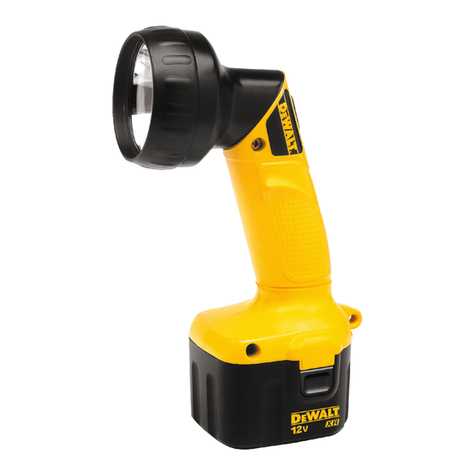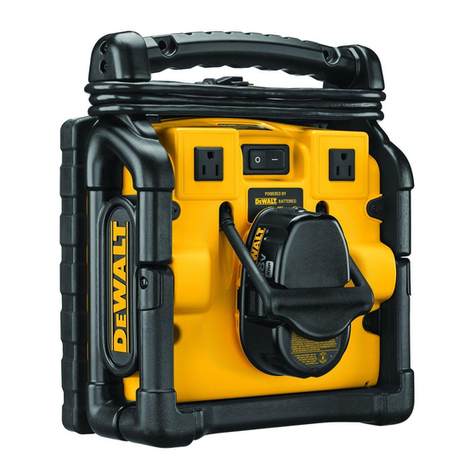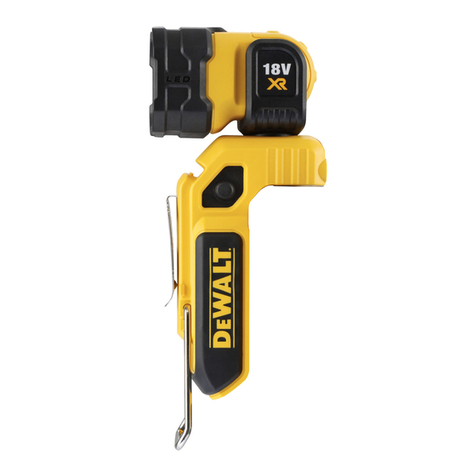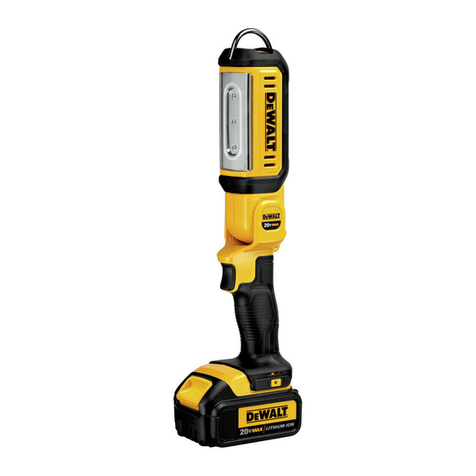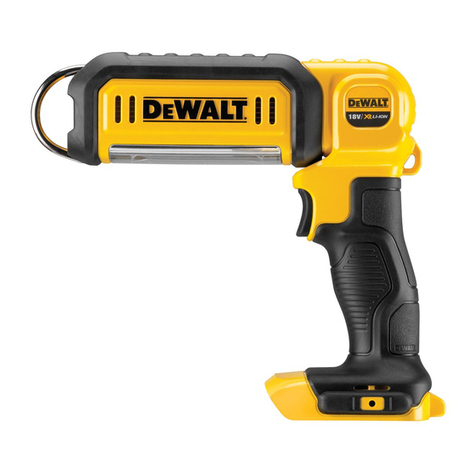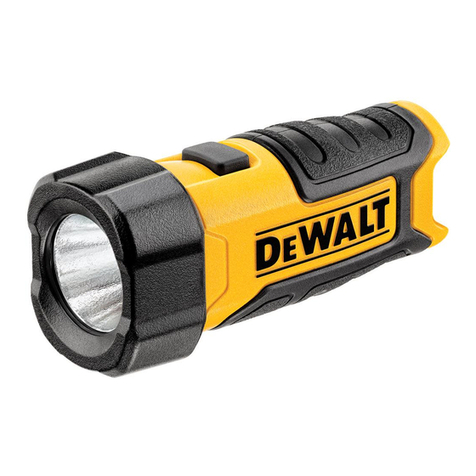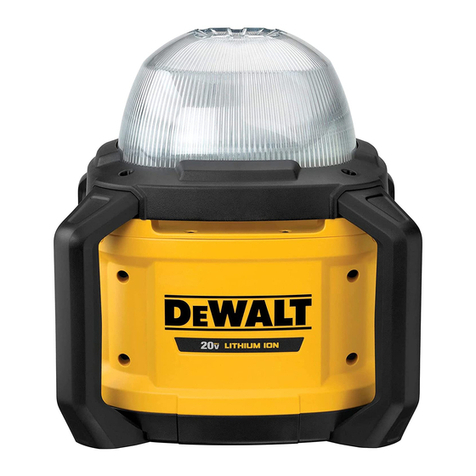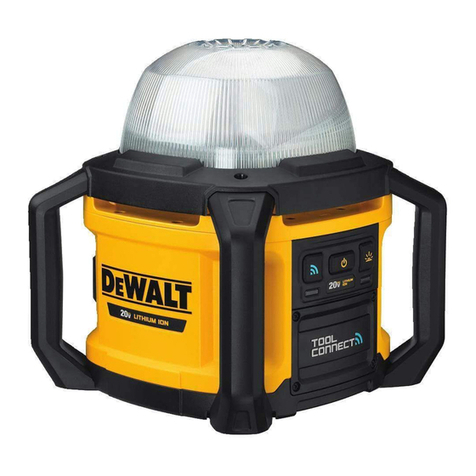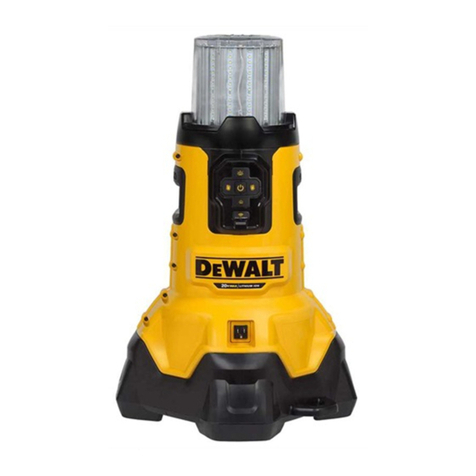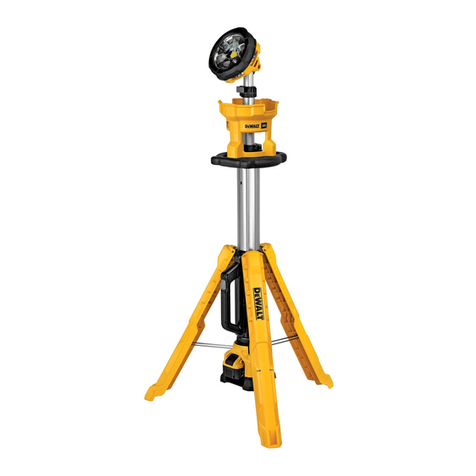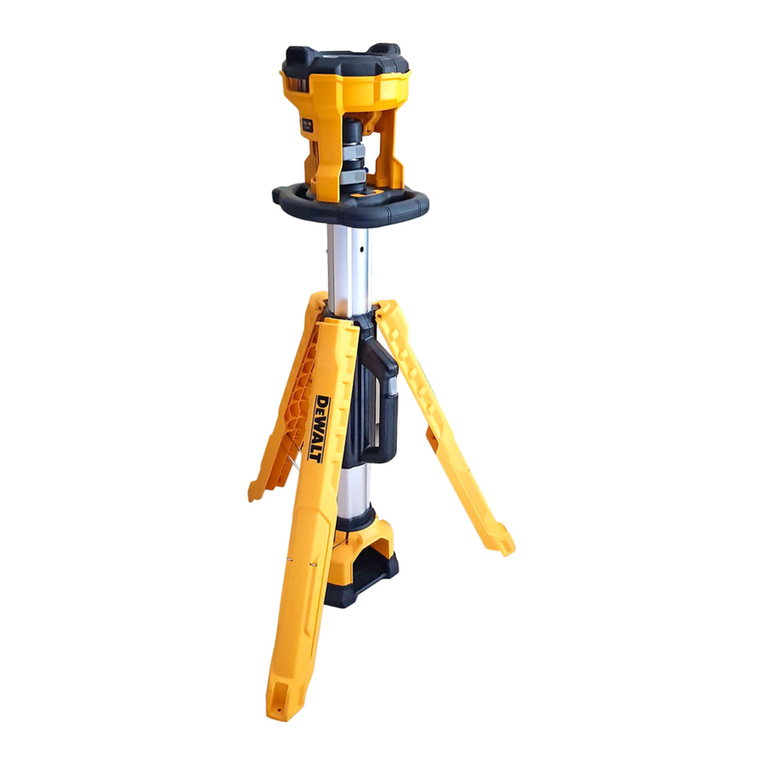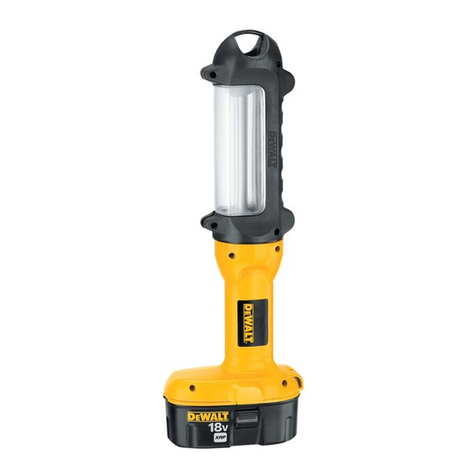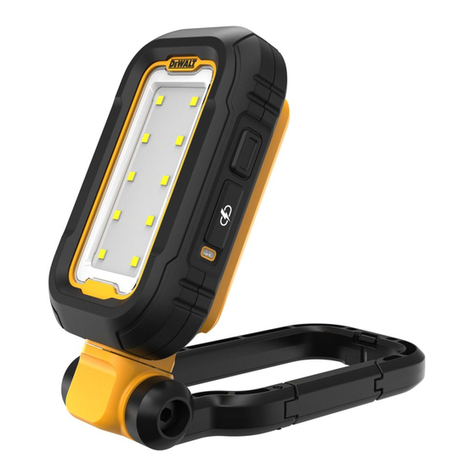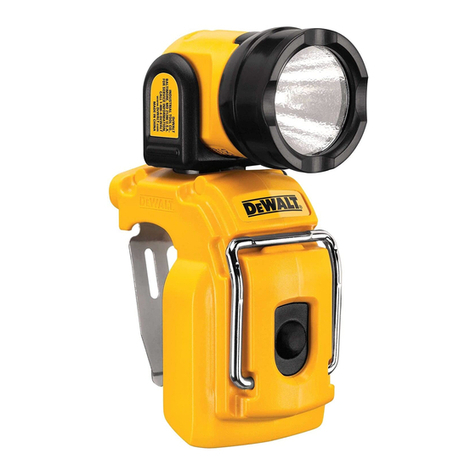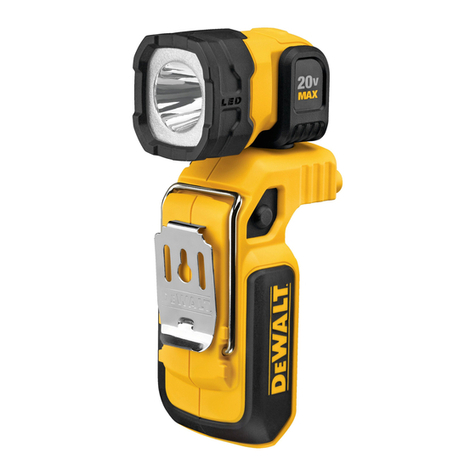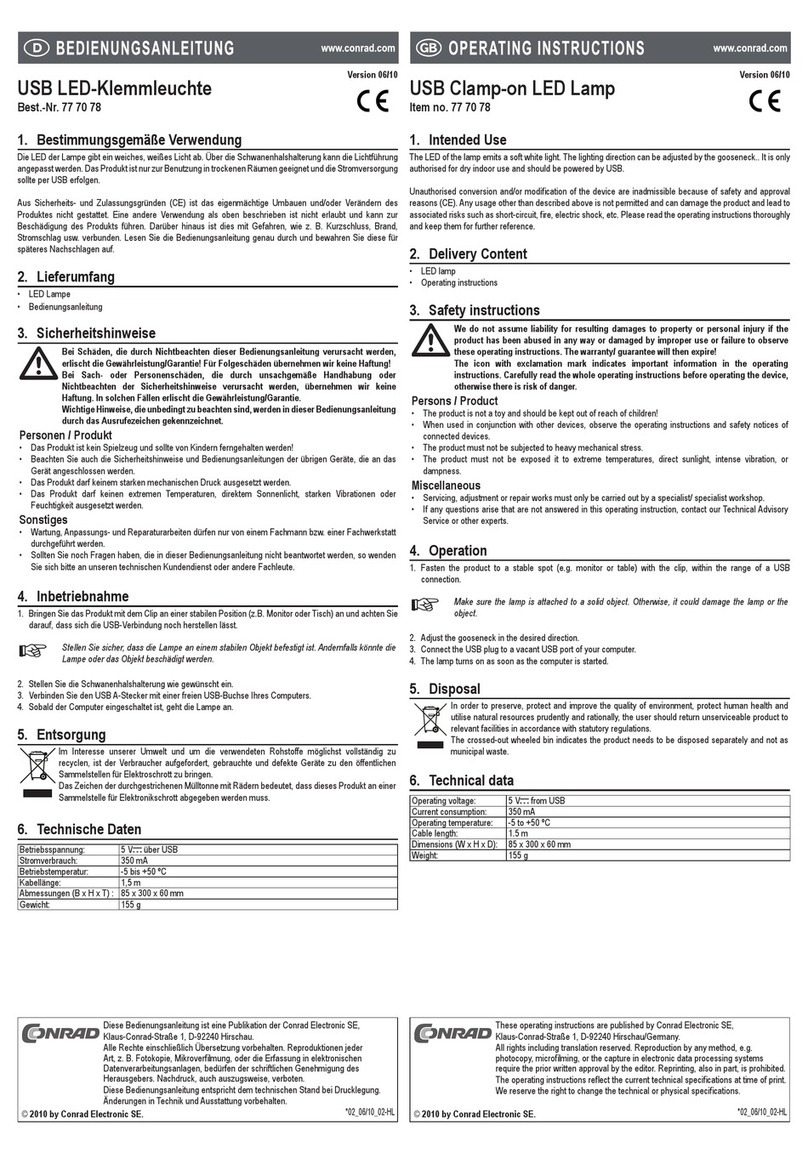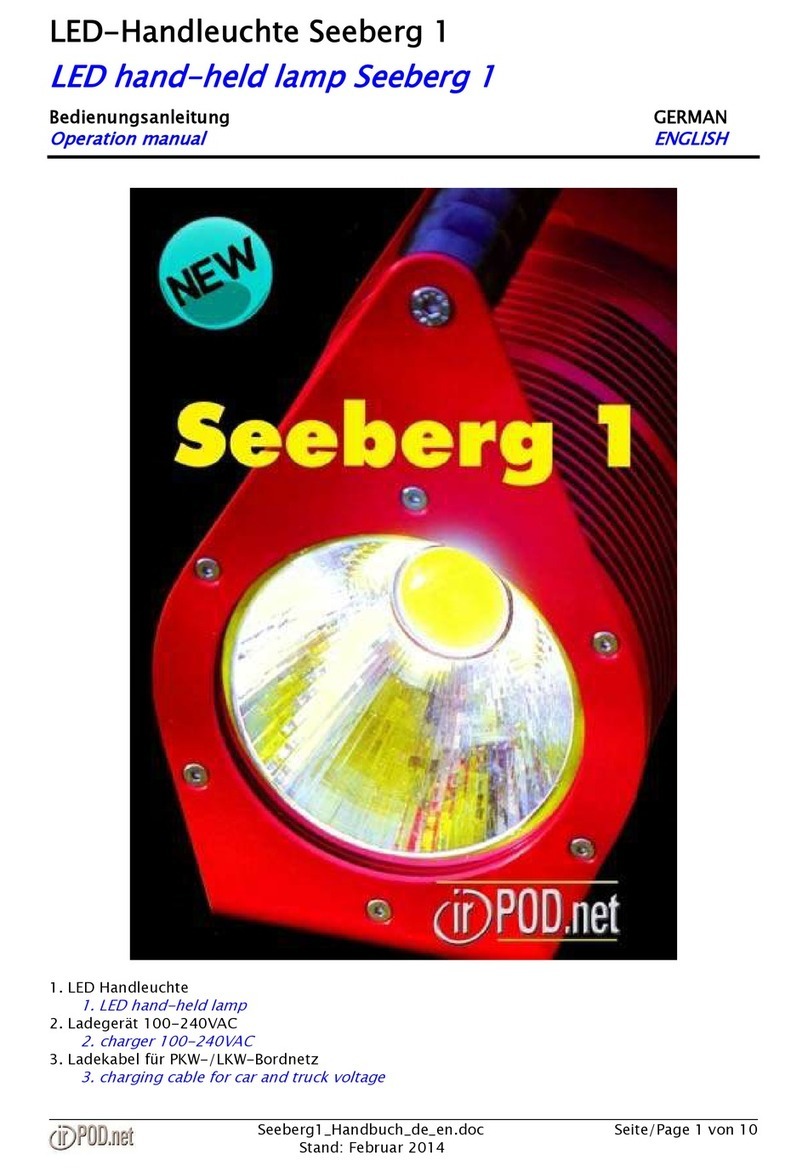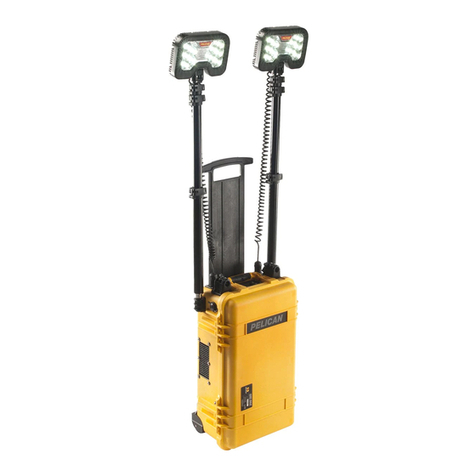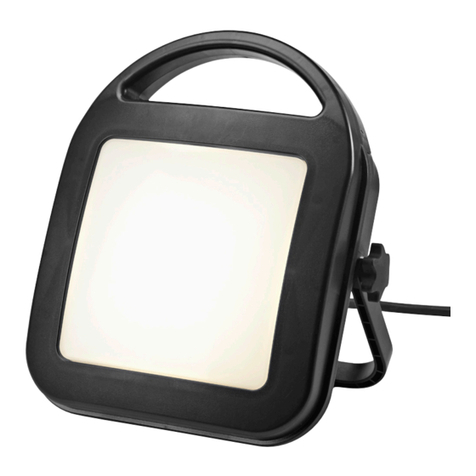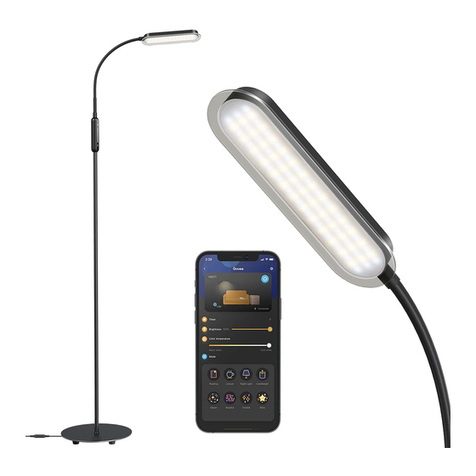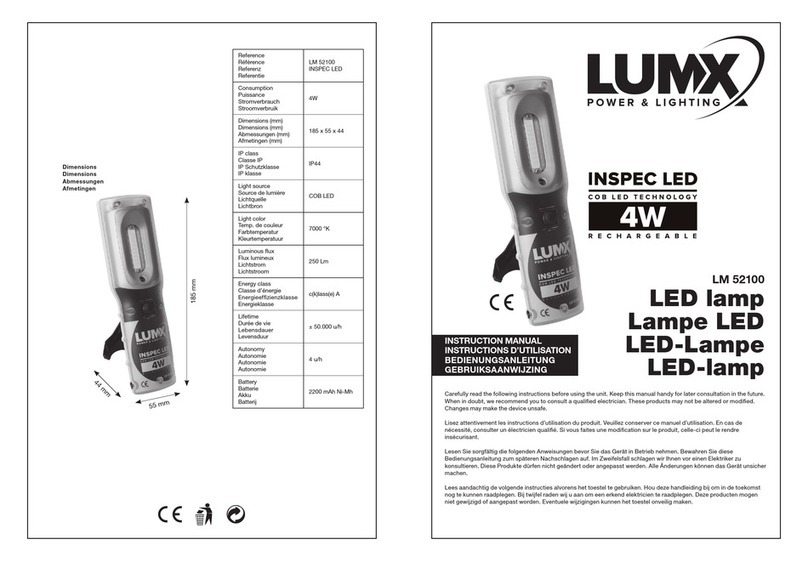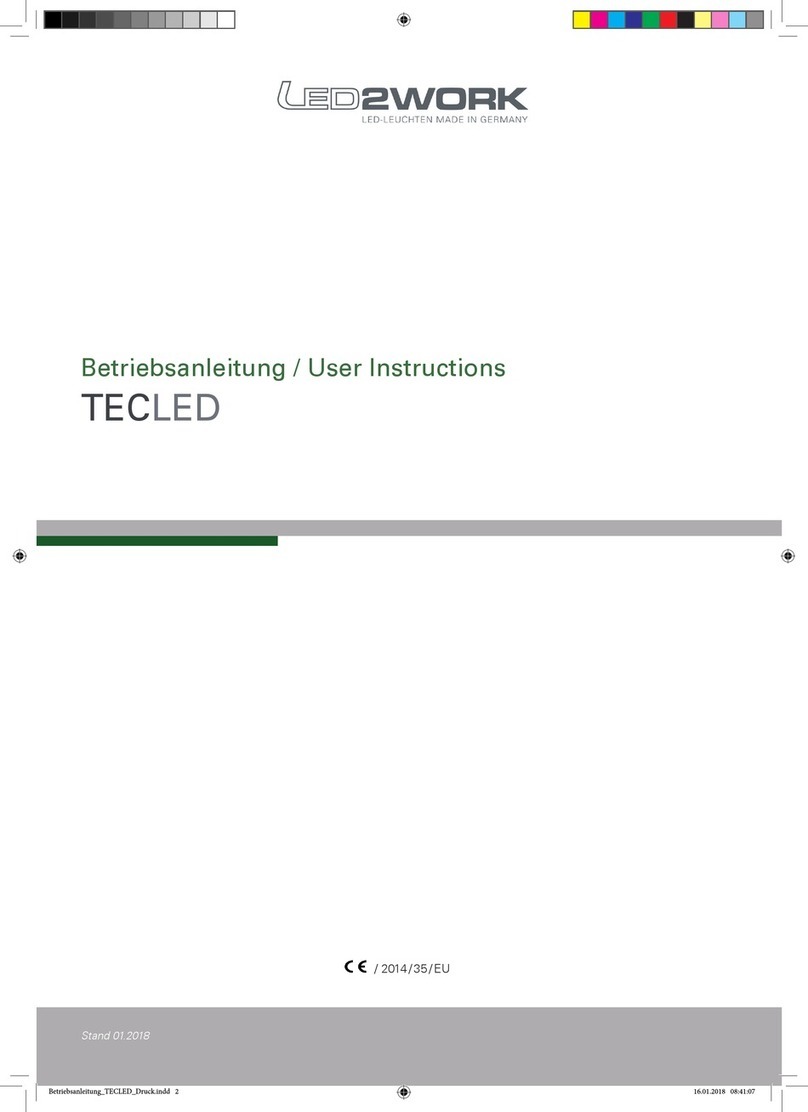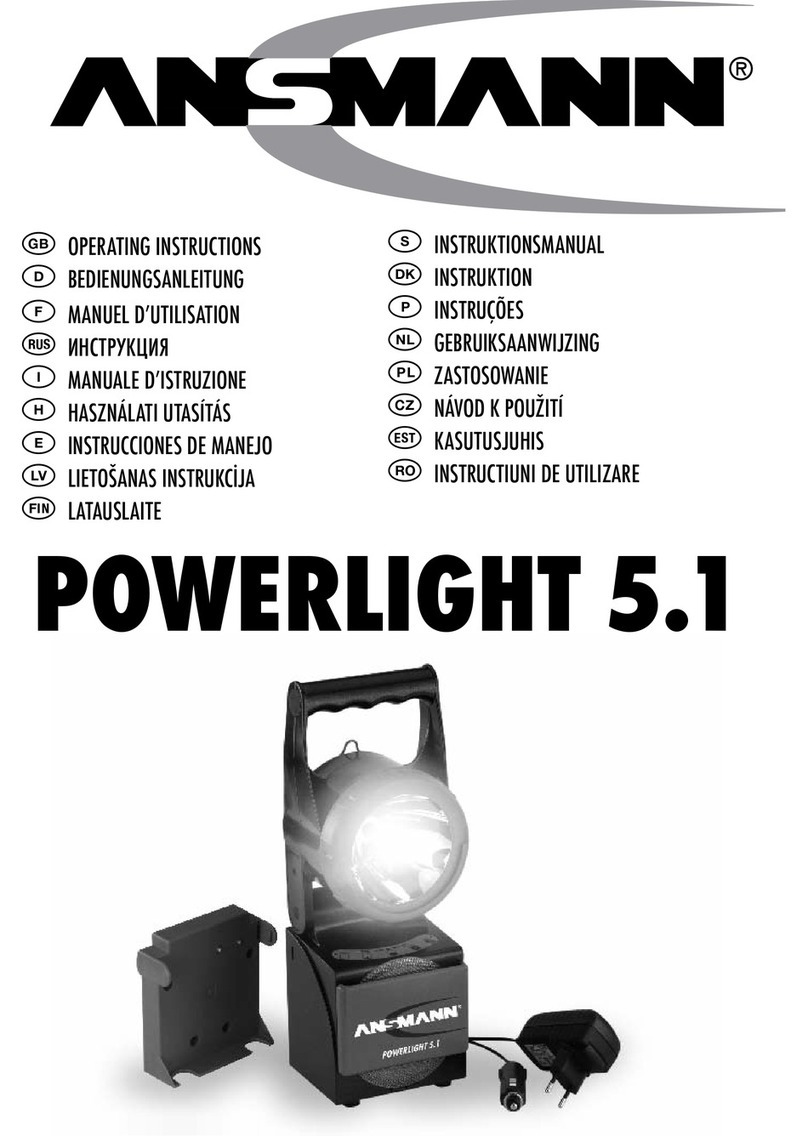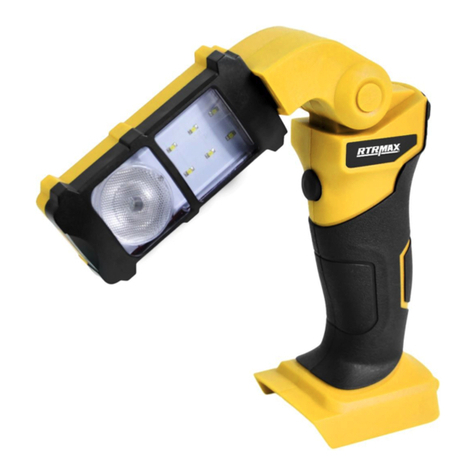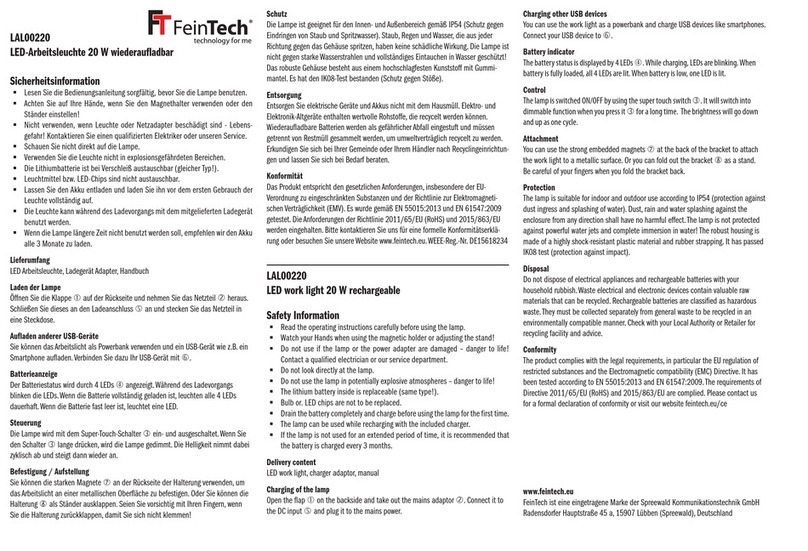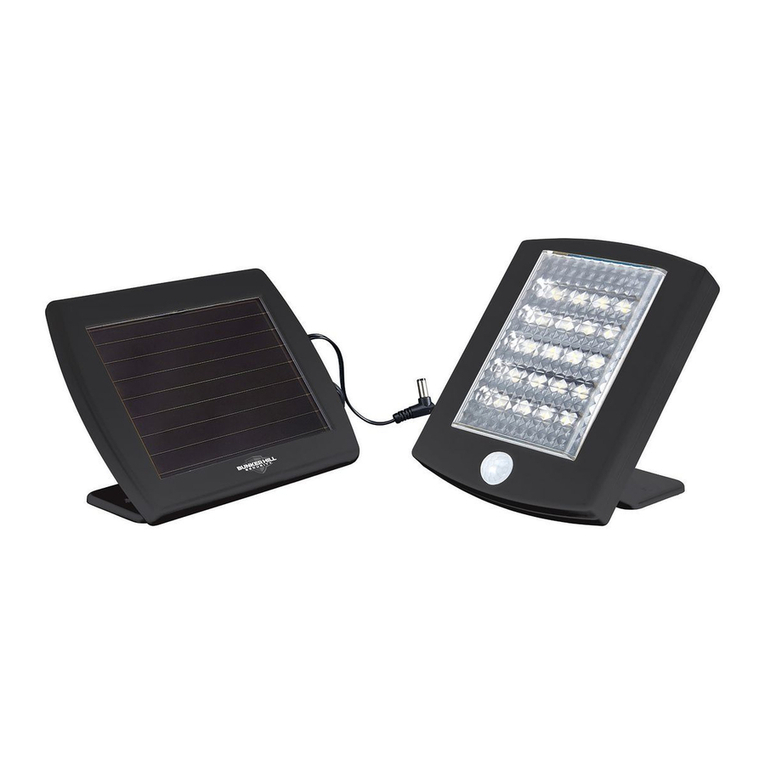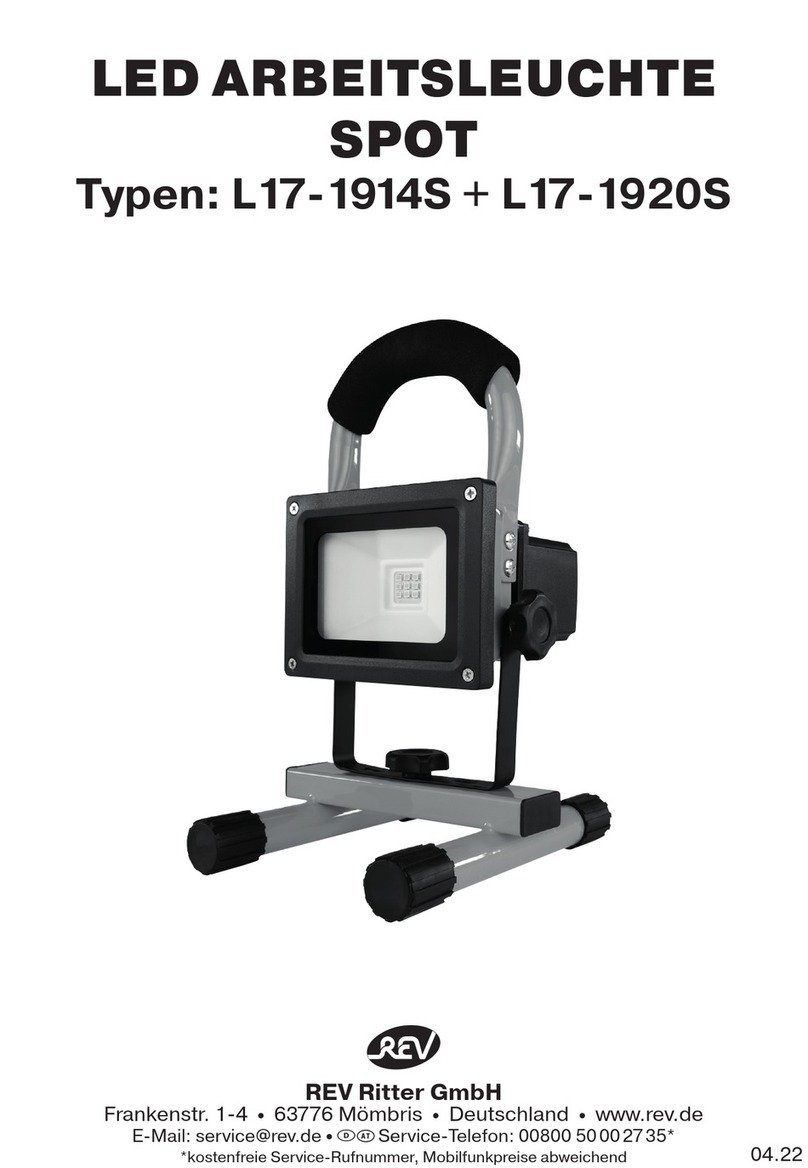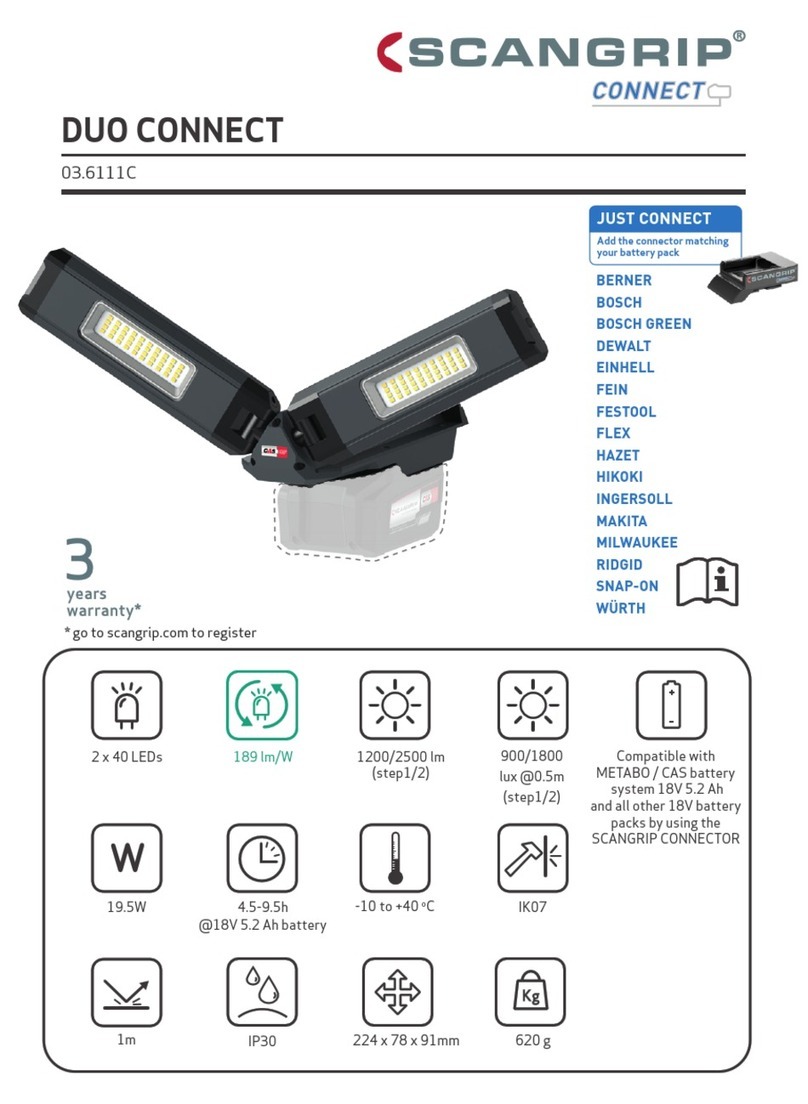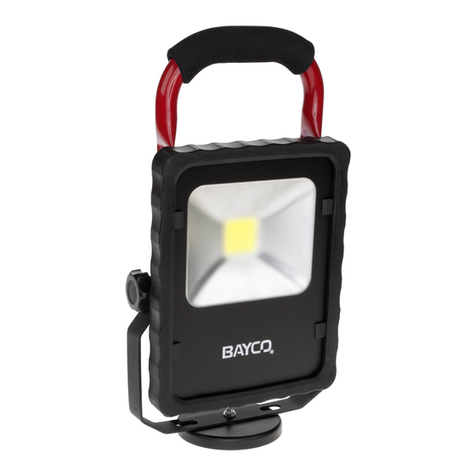General Safety Rules
WARNING! Read all instructions. Failure to follow all instructions listed below
may result in electric shock, fire and/or serious injury. The term “power tool” in all
of the warnings listed below refers to your mains-operated (corded) power tool or bat-
tery-operated (cordless) power tool.
SAVE THESE INSTRUCTIONS
1) WORK AREA SAFETY
a) Keep work area clean and well lit. Cluttered or dark areas invite accidents.
b) Do not operate power tools in explosive atmospheres, such as in the presence of
flammable liquids, gases or dust. Power tools create sparks which may ignite the dust
or fumes.
c) Keep children and bystanders away while operating a power tool. Distractions can
cause you to lose control
2) ELECTRICAL SAFETY
a) Power tool plugs must match the outlet. Never modify the plug in any way. Do not
use any adapter plugs with earthed (grounded) power tools. Unmodified plugs and
matching outlets will reduce risk of electric shock
b) Avoid body contact with earthed or grounded surfaces such as pipes, radiators,
ranges and refrigerators. There is an increased risk of electric shock if your body is
earthed or grounded.
c) Do not expose power tools to rain or wet conditions. Water entering a power tool will
increase the risk of electric shock
d) Do not abuse the cord. Never use the cord for carrying, pulling or unplugging the
power tool. Keep cord away from heat, oil, sharp edges or moving parts. Damaged
or entangled cords increase the risk of electric shock. Replace or repair damaged cords.
Make sure your extension cord is in good condition. Use only 3-wire extension cords that
have 3-prong grounding-type plugs and 3-pole receptacles that accept the tool’s plug.
e) When operating a power tool outdoors, use an extension cord suitable for outdoor
use. Use of a cord suitable for outdoor use reduces the risk of electric shock. When using
an extension cord, be sure to use one heavy enough to carry the current your product
will draw. An undersized cord will cause a drop in line voltage resulting in loss of power
and overheating. The following table shows the correct size to use depending on cord
length and nameplate ampere rating. If in doubt, use the next heavier gage. The small-
er the gage number, the heavier the cord.
Recommended Minimum Wire Size for Extension Cords
Total Length of Cord
25 ft. 50 ft. 75 ft. 100 ft. 125 ft. 150 ft. 175 ft.
7.6 m 15.2 m 22.9 m 30.5 m 38.1 m 45.7 m 53.3 m
Wire Size AWG
18 18 16 16 14 14 12
3) PERSONAL SAFETY
a) Stay alert, watch what you are doing and use common sense when operating a
power tool. Do not use a power tool while you are tired or under the influence of
drugs, alcohol or medication. A moment of inattention while operating power tools may
result in serious personal injury.
b) Use safety equipment. Always wear eye protection. Safety equipment such as dust
mask, non-skid safety shoes, hard hat, or hearing protection used for appropriate condi-
tions will reduce personal injuries.
c) Avoid accidental starting. Ensure the switch is in the off-position before plugging
in. Carrying power tools with your finger on the switch or plugging in power tools that
have the switch on invites accidents.
d) Remove any adjusting key or wrench before turning the power tool on. A wrench
or a key left attached to a rotating part of the power tool may result in personal injury.
e) Do not overreach. Keep proper footing and balance at all times. This enables better
control of the power tool in unexpected situations.
f) Dress properly. Do not wear loose clothing or jewellery. Keep your hair, clothing
and gloves away from moving parts. Loose clothes, jewellery or long hair can be
caught in moving parts. Air vents often cover moving parts and should also be avoided.
g) If devices are provided for the connection of dust extraction and collection facili-
ties, ensure these are connected and properly used. Use of these devices can
reduce dust-related hazards.
4) POWER TOOL USE AND CARE
a) Do not force the power tool. Use the correct power tool for your application. The
correct power tool will do the job better and safer at the rate for which it was designed.
b) Do not use the power tool if the switch does not turn it on and off. Any power tool
that cannot be controlled with the switch is dangerous and must be repaired.
c) Disconnect the plug from the power source and/or the battery pack from the power
tool before making any adjustments, changing accessories, or storing power
tools. Such preventive safety measures reduce the risk of starting the power tool acci-
dentally.
d) Store idle power tools out of the reach of children and do not allow persons unfa-
miliar with the power tool or these instructions to operate the power tool. Power
tools are dangerous in the hands of untrained users.
INSTRUCTION MANUAL
DC527 18 Volt Fluorescent Area Light
DC528 14.4/12 Volt Fluorescent Area Light
The following are trademarks for one or more DEWALT power tools: the yellow and black color scheme; the “D” shaped
air intake grill; the array of pyramids on the handgrip; the kit box configuration; and the array of lozenge-shaped humps
on the surface of the tool.
e) Maintain power tools. Check for misalignment or binding of moving parts, break-
age of parts and any other condition that may affect the power tools operation. If
damaged, have the power tool repaired before use. Many accidents are caused by
poorly maintained power tools.
f) Keep cutting tools sharp and clean. Properly maintained cutting tools with sharp cut-
ting edges are less likely to bind and are easier to control.
g) Use the power tool, accessories and tool bits etc., in accordance with these
instructions and in the manner intended for the particular type of power tool, tak-
ing into account the working conditions and the work to be performed. Use of the
power tool for operations different from those intended could result in a hazardous situ-
ation.
5) BATTERY TOOL USE AND CARE
a) Ensure the switch is in the off position before inserting battery pack. Inserting the
battery pack into power tools that have the switch on invites accidents.
b) Recharge only with the charger specified by the manufacturer. A charger that is suit-
able for one type of battery pack may create a risk of fire when used with another battery
pack.
c) Use power tools only with specifically designated battery packs. Use of any other
battery packs may create a risk of injury and fire.
d) When battery pack is not in use, keep it away from other metal objects like paper
clips, coins, keys, nails, screws, or other small metal objects that can make a con-
nection from one terminal to another. Shorting the battery terminals together may
cause burns or a fire.
e) Under abusive conditions, liquid may be ejected from the battery, avoid contact. If
contact accidentally occurs, flush with water. If liquid contacts eyes, additionally
seek medical help. Liquid ejected from the battery may cause irritation or burns.
6) SERVICE
a) Have your power tool serviced by a qualified repair person using only identical
replacement parts. This will ensure that the safety of the power tool is maintained.
Safety Rules for Fluorescent Area Lights
WARNING: Burn hazard. Do not operate flashlight or charger near flammable liquids or in
gaseous or explosive atmospheres. Internal sparks may ignite fumes causing personal injury.
WARNING: Shock Hazard. Remove battery pack before replacing the fluorescent tube.
WARNING: Lens and fluorescent tube become hot during use.
• During or immediately after use, don’t lay area light flat on lens surface.
• Don’t touch lens surface when tube is lit or immediately after use.
• Handle light with care around any flammable surface.
•If fluorescent tube has been lit, let it cool for several minutes before changing tube.
• Vision may be impaired when looking directly into fluorescent light.
•Do not expose light or charger to wet or damp areas. Do not expose light or charger to rain
or snow.
• Do not wash light or charger with water or allow water to get inside light or charger. Do not
submerge light in water at any time.
•While light is in use, do not cover with cloth or other flammable materials due to increased
risk of fire.
• Do not operate without lens cover assembly attached.
CAUTION: When not in use, place tool on its side on a stable surface where it will not
cause a tripping or falling hazard. Some tools with large battery packs will stand upright on
the battery pack but may be easily knocked over.
• The label on your tool may include the following symbols.
V ..........volts A ................amperes
Hz ........hertz W ..............watts
min........minutes ..............alternating current
......direct current no..............no load speed
........Class II Construction …/min ........revolutions or reciprocation per minute
........earthing terminal ..............safety alert symbol
Important Safety Instructions for Battery Packs
The DC527 uses an 18 Volt DEWALT battery pack. The DC528 can use a 12 Volt or 14.4 Volt
DEWALTbattery pack. When ordering replacement battery packs, be sure to include catalog
number and voltage: Extended Run-Time battery packs deliver more run-time than standard
battery packs. Consult the chart at the end of this manual for compatibility of chargers and
battery packs.
NOTE: Your tool will accept either standard or Extended Run Time battery packs. However, be
sure to select proper voltage. Batteries slowly lose their charge when they are not on the
charger, the best place to keep your battery is on the charger at all times.
The battery pack is not fully charged out of the carton. Before using the battery pack and
charger, read the safety instructions below. Then follow charging procedures outlined.
READ ALL INSTRUCTIONS
•Do not incinerate the battery pack even if it is severely damaged or is completely
worn out. The battery pack can explode in a fire.
•A small leakage of liquid from the battery pack cells may occur under extreme usage
or temperature conditions. This does not indicate a failure. However, if the outer seal is
broken and this leakage gets on your skin:
a. Wash quickly with soap and water.
b. Neutralize with a mild acid such as lemon juice or vinegar.
c. If battery liquid gets into your eyes, flush them with clean water for a minimum of 10 min-
utes and seek immediate medical attention. (Medical note: The liquid is 25-35% solu-
tion of potassium hydroxide.)
• Charge the battery packs only in DEWALT chargers.
•DO NOT splash or immerse in water or other liquids.
•Do not store or use the tool and battery pack in locations where the temperature may
reach or exceed 105°F (such as outside sheds or metal buildings in summer).
DANGER: Electrocution hazard. Never attempt to open the battery pack for any reason.
If battery pack case is cracked or damaged, do not insert into charger. Electric shock or
electrocution may result. Damaged battery packs should be returned to service center for
recycling.
NOTE: Battery storage and carrying caps are provided for use whenever the
battery is out of the tool or charger. Remove cap before placing battery in
charger or tool.
WARNING: Fire hazard. Do not store or carry battery so that metal
objects can contact exposed battery terminals. For example, do not place
battery in aprons, pockets, tool boxes, product kit boxes, drawers, etc., with loose
nails, screws, keys, etc. without battery cap. Transporting batteries can possibly cause
fires if the battery terminals inadvertently come in contact with conductive materials
such as keys, coins, hand tools and the like. The US Department of Transportation
Hazardous Material Regulations (HMR) actually prohibit transporting batteries in commerce or
on airplanes (i.e., packed in suitcases and carry-on luggage) UNLESS they are properly
protected from short circuits. So when transporting individual batteries, make sure that the
battery terminals are protected and well insulated from materials that could contact them and
cause a short circuit.
The RBRC™ Seal
The RBRC™ (Rechargeable Battery Recycling Corporation) Seal on the
nickel-cadmium battery (or battery pack) indicates that the costs to recycle the
battery (or battery pack) at the end of its useful life have already been paid by
DEWALT. In some areas, it is illegal to place spent nickel-cadmium batteries in
the trash or municipal solid waste stream and the RBRC program provides an
environmentally conscious alternative.
RBRC™ in cooperation with DEWALT and other battery users, has established programs in
the United States to facilitate the collection of spent nickel-cadmium batteries. Help protect our
environment and conserve natural resources by returning the spent nickel-cadmium battery to
an authorized DEWALT service center or to your local retailer for recycling. You may also
contact your local recycling center for information on where to drop off the spent battery.
RBRC™is a registered trademark of the Rechargeable Battery Recycling Corporation.
Important Safety Instructions for Battery Chargers
SAVE THESE INSTRUCTIONS: This manual contains important safety instructions for battery
chargers.
• Before using charger, read all instructions and cautionary markings on charger, battery
pack, and product using battery pack.
DANGER: Electrocution hazard. 120 volts are present at charging terminals. Do not probe
with conductive objects. Electric shock or electrocution may result.
WARNING: Shock hazard. Do not allow any liquid to get inside charger. Electric shock may
result.
CAUTION: Burn hazard. To reduce the risk of injury, charge only DEWALT nickel-cadmium
rechargeable batteries. Other types of batteries may burst causing personal injury and damage.
CAUTION: Under certain conditions, with the charger plugged in to the power supply, the
exposed charging contacts inside the charger can be shorted by foreign material. Foreign
materials of a conductive nature such as, but not limited to, steel wool, aluminum foil, or any
buildup of metallic particles should be kept away from charger cavities. Always unplug the
charger from the power supply when there is no battery pack in the cavity. Unplug charger
before attempting to clean.
